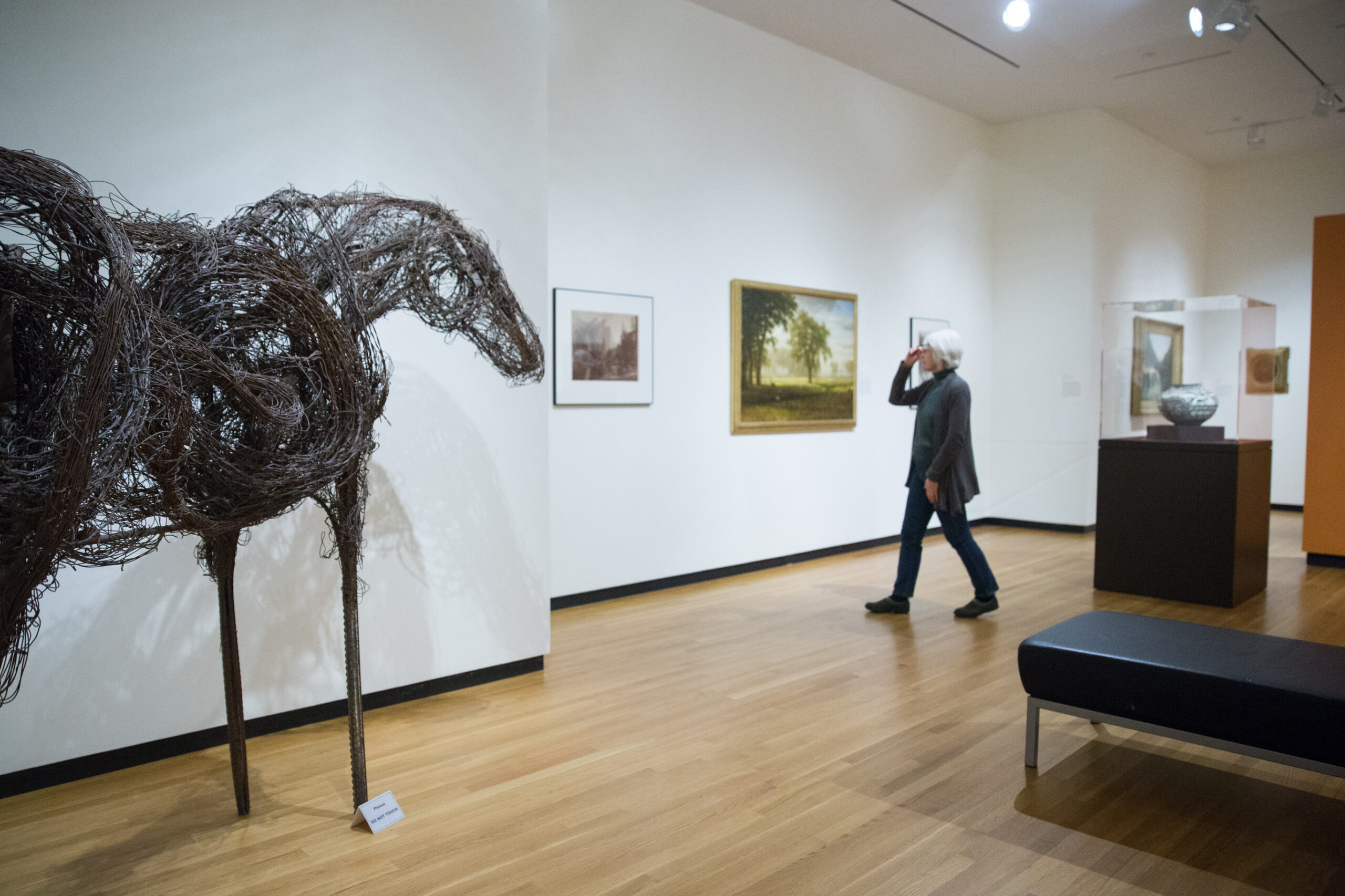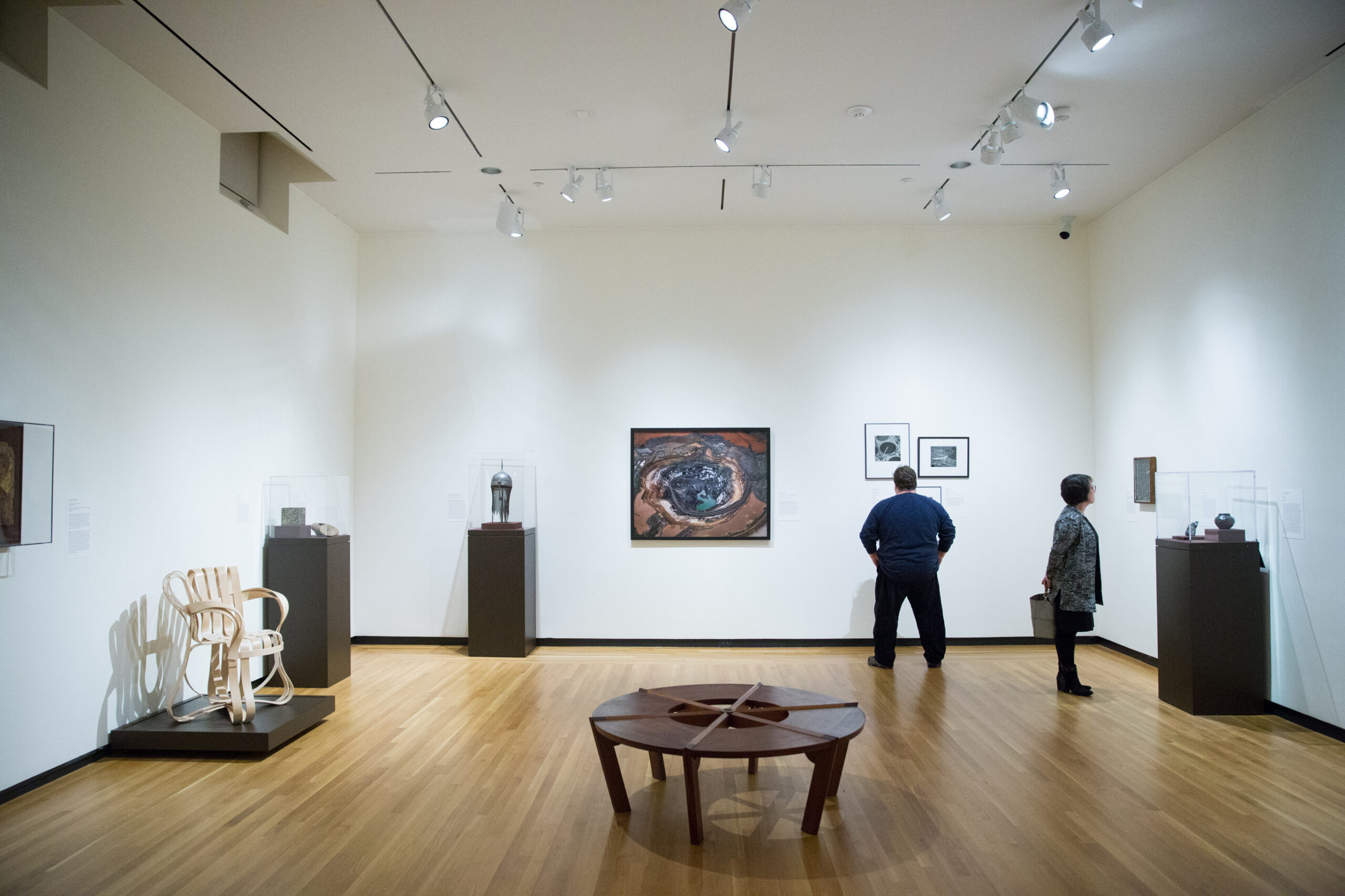Intersections of Art and the Environment
January 25, 2019
 Ann Basu
Ann BasuEnter the latest exhibition at Bowdoin College Museum of Art (BCMA), and it may not be what you expect. In ‘Material Resources: Intersections of Art and the Environment,’ notions of what environmental art ought to look like are challenged within moments of arrival.
Designed to coincide with the October opening of the Roux Center for the Environment, the BCMA exhibit capitalizes on Bowdoin’s unique strengths: its strong legacy in the interdisciplinary study of the environment and its encyclopedic, transnational art collection.
Curated by Curatorial Assistant Honor Wilkinson, the exhibit is divided into three parts: Extraction, Conservation and Development.
“[The exhibit] connects objects that span history and the globe under the umbrella of their representation of and use of natural resources,” said Wilkinson.
Environmental artists such as featured husband-wife team Christo and Jeanne-Claude create art not just about the landscape, but from it. Their work, “Running Fence,” is a physical fence stretching through the desert. On display in the exhibit is a preparatory sketch.
Other works similarly meld the social, political and environmental, such as Agnes Denes’ “Tree Mountain,” an earthwork reclamation project that planted 11,000 trees in Western Finland. Natasha Goldman, adjunct lecturer in art history, spoke about this large-scale, landscape-based work at a panel Thursdy afternoon.
“By incorporating the community into the process of making art, Denes embodies the idea of social sculpture. She makes a work that is both of the land and for the land,” said Goldman.
The active search for creative solutions to environmental problems is reflected in another highlight, Mel Chin’s “Caged Corn,” a sculptural work referencing his work with scientists using plants to draw heavy metals out of the soil.
“Through [Chin’s] aesthetic and creative intervention into the land,” said Wilkinson, “he’s able to solve an issue of pollution.”
Juxtaposed with imagery of mining and intended to confound expectations of what ‘extraction’ means, this is one of the most outspokenly activist pieces in the collection.
Some pieces speak to art’s history of communicating scientific knowledge, as Assistant Professor of Biology Patricia Jones pointed out.
“The marriage of beautiful aesthetics and accurate scientific depictions remains critical in many ways,” said Jones.
Not all art objects are created with the intent of making an environmental statement. However, as Wilkinson points out, all art is tethered to the environment, to the intertwined earth and human systems which formed them.
“The interdisciplinary framework of the environment—when you look at a painting from that perspective, your path of inquiry can go in so many different directions,” she said.
Even old favorites, such as the museum’s treasured Marsden Hartley’s “After the Storm, Vinalhaven,” have something new to be seen when framed with an environmental lens. “Material Resources” highlights Hartley’s use of pink granite as an object with a strong connection to place and identity, significant in the economic and cultural history of Vinalhaven.
“Using the environmental perspective helps us represent traditional art forms. Not just thinking of them as photography or sculpture, but of their connection to the earth’s resources,” said Wilkinson. “It encourages people to see singular artworks from multiple perspectives.”
In a collection spanning the globe and two millennia, the diverse media highlights the environment’s constant presence in art. The exhibition features sculpture, painting, photography, furniture, masks and an especially unique and treasured object: the sketch created by famous architect Le Corbusier during his 1935 visit to Bowdoin.
The table-cloth sketch, legendarily the product of the architect’s passionate outburst during dinner with the College’s president, depicts his vision of the Radiant City, a utopian ideal at the epicenter of his design philosophy.
In her task of narrowing the BCMA’s 20,000 strong collection to the eventual 84 featured in the exhibit, Wilkinson first took her cues from records, noting which objects had been pulled for class visits by Environmental Studies faculty.
“That in itself acknowledges the fact that these art objects are already being used in the study of the environment,” said Wilkinson.
Faculty engagement goes beyond record books. Professors are active participants in the exhibit and its literature. One featured artist, Stephanie Rothenberg, is the inaugural Roux Scholar. Her work illuminates non-human systems as models for rebuilding infrastructure—the ways we can learn from, and are shaped by, the world around us.
The exhibit will be on view at the BCMA through June 2, 2019.


Comments
Before submitting a comment, please review our comment policy. Some key points from the policy: